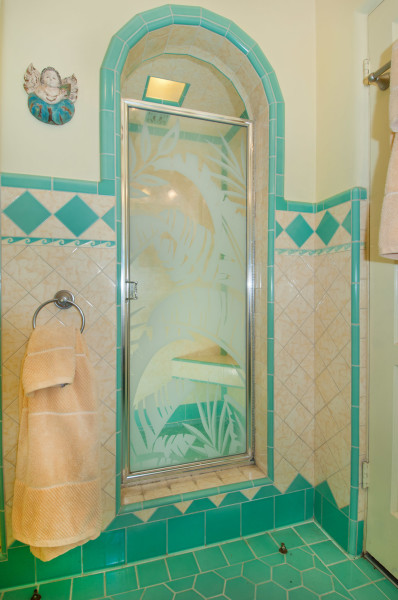Watery colors and sea life motifs were popular in the 1920s. Here, the round tank on a stand is an antique aquarium. The shimmering aquatic mural is more recent. Douglas Keister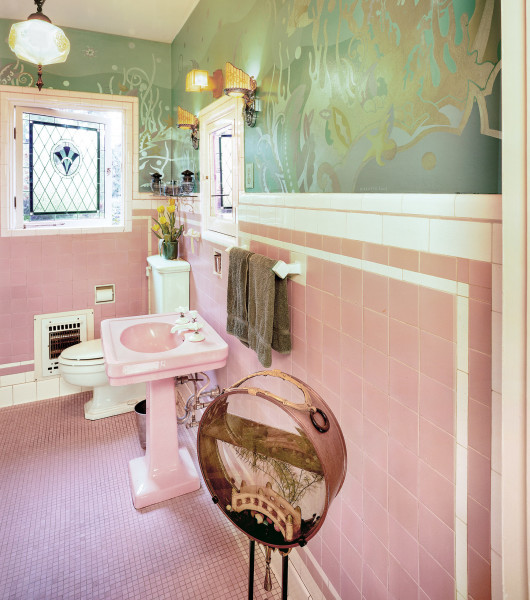
A bathroom of 1923 probably looked very similar to a bathroom of 1907: utilitarian and sanitary with white paint and tile, a wall-hung or pedestal sink and clawfoot tub, nickel finishes and exposed plumbing. Just a couple of years later, colored tile and, around 1927, colored fixtures would be introduced, and everything would change.
Color is the key word for bathrooms built or remodeled between the World Wars. Ivory and pastel toilets and sinks came first, joined during the 1930s by fixtures in orchid and mauve, Ming green and peach. The colors kept coming: baby blue, candy pink, butter yellow, lavender, and black. In the 1940s, red, burgundy, and navy blue were introduced.
With deep-lavender wall tiles, deco tile inserts, and a bold geometric tile floor, this more recent bathroom has a Twenties vibe. Douglas Keister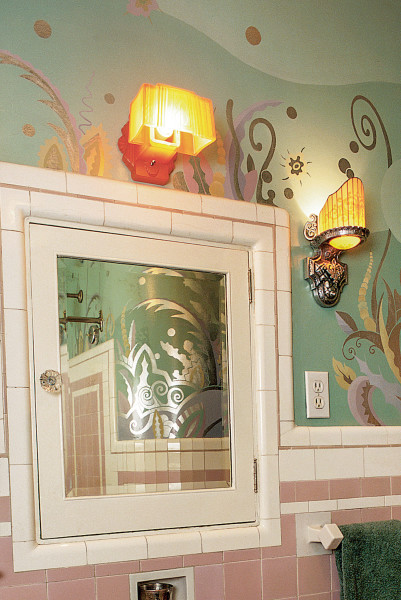
In the Thirties, a pastel or white often was used with black bullnose and accent tiles, lending Art Deco sophistication. For more than a decade, streamlined Moderne and Art Deco-design fittings, light fixtures, and motifs were popular for bathrooms, even if the rest of the house was traditional. Motifs are easily recognized: chevrons and ziggurats, concentric circles, fans and shells, aerodynamic lines. A Tudor house might have stylized Viking ships in decorated tile or a stencil design; in California, tile design was Spanish or Moorish.
Pedestal sinks were used, as were streamlined console sinks on chrome legs. The tub, often with Deco curves, was now built in. Tub recesses or niches were all the rage. Like an inglenook near the hearth or a breakfast nook in the kitchen, a tub niche is an architectural device that creates a cozy room within a room. The tub area was a perfect place to add sculptural effects—and a broad expanse of colorful tile.
Gloss and shimmer added to the Jazz Age urbanity. Frameless mirrors were larger, maybe beveled or frosted. Tile glazes were often glossy and chrome is shiny. Metallic inks were used in wallpapers.
This is the era of Vitrolite, a pigmented structural glass familiar from Art Deco-era storefronts and cinemas. But it was also used to clad the walls in kitchens and baths of the era. Colors ran from acid green to pink to shiny black.
Black and white made a return around 1940. Square white tile replaced the subway tile of earlier years. Often white tile was used with accent tile in a deep color. There was also a fad for red and black. The look was machine-age—less decorated than Jazz Age rooms. Luxury colors were rare during the war years, and when color returned it was more somber: clay pink or burgundy with grey, for example.
Colored tile remained ubiquitous in the 1950s, especially mint green and light blue, but most famously pink. It’s been estimated that five million pink bathrooms remain in mid-century houses built from 1945 to 1965. Saving them has achieved cult status: Check out savethepinkbathrooms.com
Although plenty of black and white or grey and white baths were built in the first decades of the 20th century, originals from the period tend to be more fanciful than “revival” baths are today. More recent retro bathrooms—designed by architects working in Arts & Crafts, Spanish Revival, and Art Deco or Moderne idioms—tend to use white or nature-inspired colors tempered with wood. Some new revival bathrooms are pretty wild, however, designed around brilliant, decorated tiles. Once again, architectural effects include a shaped opening, a tiled ceiling, a deco-tile border or insert, and an in-the-wall niche.
For those creating the look today, four-inch-square and other popular 20th-century tiles are readily available. Many art-tile types available in the 1920s and ’30s have been revived; the selection, in fact, is bigger than ever before. Choose among patterns influenced by Hispano–Moresque design and Art Deco motifs.
Pick bath fixtures with a streamlined silhouette—no neo-Victorian details. Both angular geometry and clean curves work.
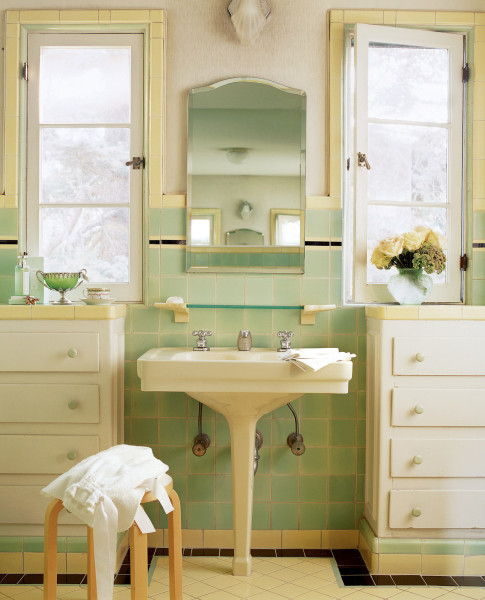
Dominique Vorillon
Classic white fixtures have always been in style, so that remains an option, as does the reuse of salvaged fixtures. You can still get bath fixture suites in ivory or bone, some in beige and grey. Kohler makes a black toilet. Some manufacturers offer select fixtures in pastels, red, or navy.
Adding some sparkle is a shortcut to a Jazz Age look. The spare lines were energized by dramatic lighting and reflective surfaces. Use chrome, not nickel or dark metal finishes. A round, frameless mirror always makes a statement. Another option is a vertical mirror flanked by with cylinder sconces. Frosted-glass “slipper shades” and shell- or fan-shaped sconces are romantic. Then again, the plain porcelain “hospital” fixtures of the early Twenties are appropriate. Accessories from towel bars to hardware can be chosen for their retro look.
Only the toilets have been replaced in these surviving bathrooms. The rooms are bright, functional, and easy to maintain. Upstairs baths offer wide sinks and generous bathing areas. Carolyn Bates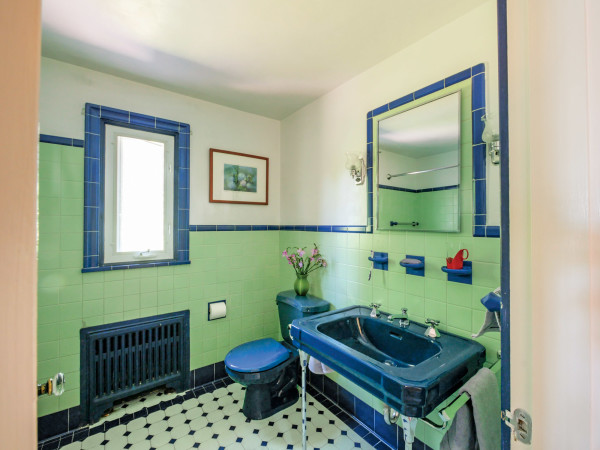
The Real Deal: 1940
By Regina Cole
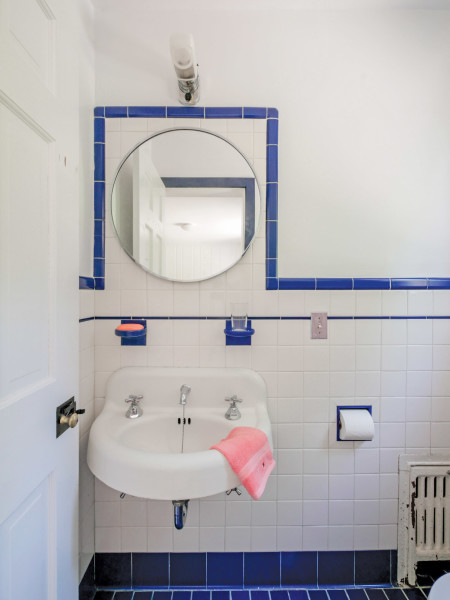
Carolyn Bates
By the mid-1940s, wartime shortages and the ascendance of International Style dictated a return to the spare white bath. But most 1940s homeowners were not ready to forgo all color. They enjoyed a cheerful pop of green or blue first thing in the morning. Also, they had absorbed a decorating tip broadcast by design magazines during the early 20th century: You can give a tiny room the illusion of more space by running a horizontal band around the middle of it.
That’s the case in a first-floor powder room (above left) in a 1940 house in Burlington, Vermont. “It is very cozy; the door just barely makes it by the sink,” says Susan Dorn, a software engineer and entrepreneur who until recently lived in the house with her husband, Michael Rooney, a farmer. The half bath features white 4”x4” tiles to wainscot height, topped by a border of bright ocean-blue bullnose tiles. These make their way around the window and the round, mirrored medicine cabinet. The built-in soapdish, toilet-paper holder, and toothbrush holders are all in matching blue, as is the towel bar. A narrow band of blue tile underlines the composition; the blue flooring tile finishes the crisp blue-and-white scheme.
Carolyn Bates Carolyn Bates A larger bathroom upstairs uses the same blue tiles to describe a line around the room and its architectural elements (opposite). But here, the ocean shade partners with light-green tile on the walls and floor. Here, the only white to be found is the painted wall above the tile wainscot. All the fixtures are deep blue, including the sink, bathtub, and toilet, which are matched by the soapdish, cup holder, and toothbrush holder. This floor has a starring role, its green tiles edged with a blue border and interspersed with small blue diamonds. A third color is introduced in the buttery flooring tile. Carolyn Bates In both bathrooms, the toilets are later replacements for the originals, but otherwise, all the original elements remain. Upstairs, the blue of the tiles and fixtures is a color that never lost its appeal, and that replacement toilet is a close match. A third bathroom (above right) has burgundy fixtures and accent tile. “I just loved walking into that blue and green bathroom,” Susan Dorn says. “The coloration is so wild that, even if you don’t like it, you know it was special.” In a 1934 Spanish “hacienda” bungalow in San Marino, Cal., the downstairs bathroom still has its emphatic tile scheme. Squares are rotated for a diamond pattern; half tiles create an Art Deco zigzag. Chris Considine During the Jazz Age, brilliant California-made tile, often in stylized patterns inspired by Islamic art, was perfect for the Mediterranean and Spanish Colonial Revival houses built ca. 1915–1930s. Besides Hispano–Moresque designs, stylized floral and aquatic themes—fish, waves—were popular in decorated tiles. Innovations had made tiling more affordable; magazines and plumbing catalogs extolled the colorful modern bath. Today’s offerings again include Spanish-influenced California tiles (Malibu and Catalina); revived techniques—cuenca, cuerda seca, tubeline—are still in use by studio artisans and larger makers.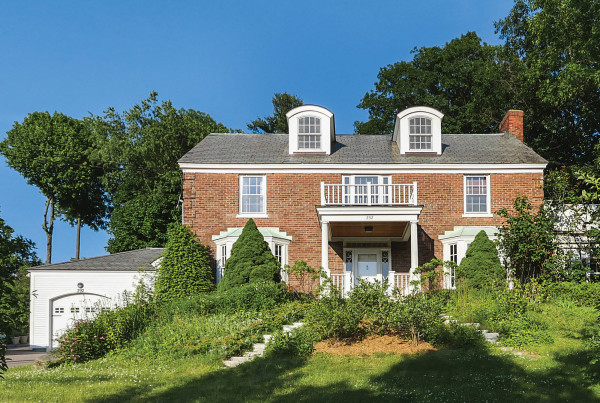
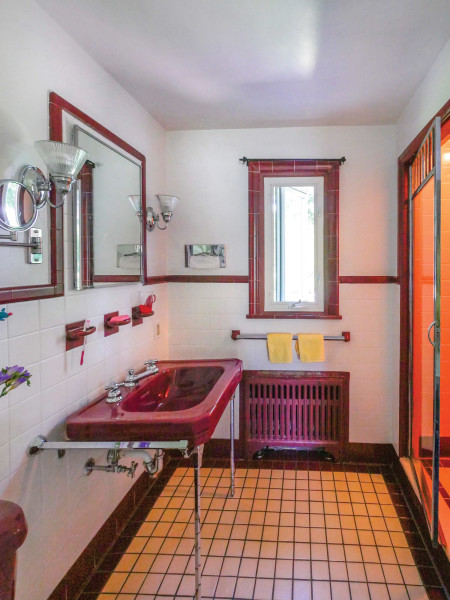
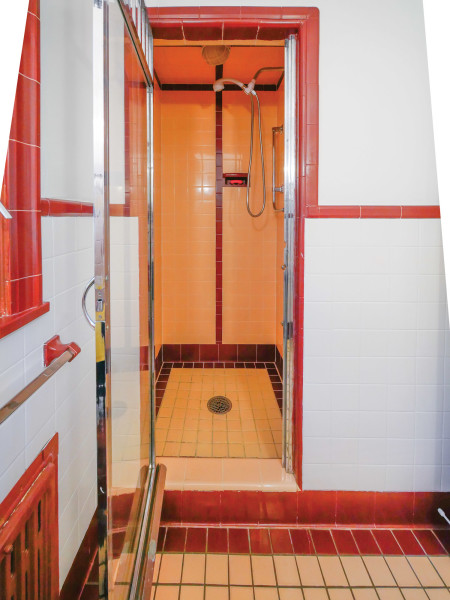
California Explosion
